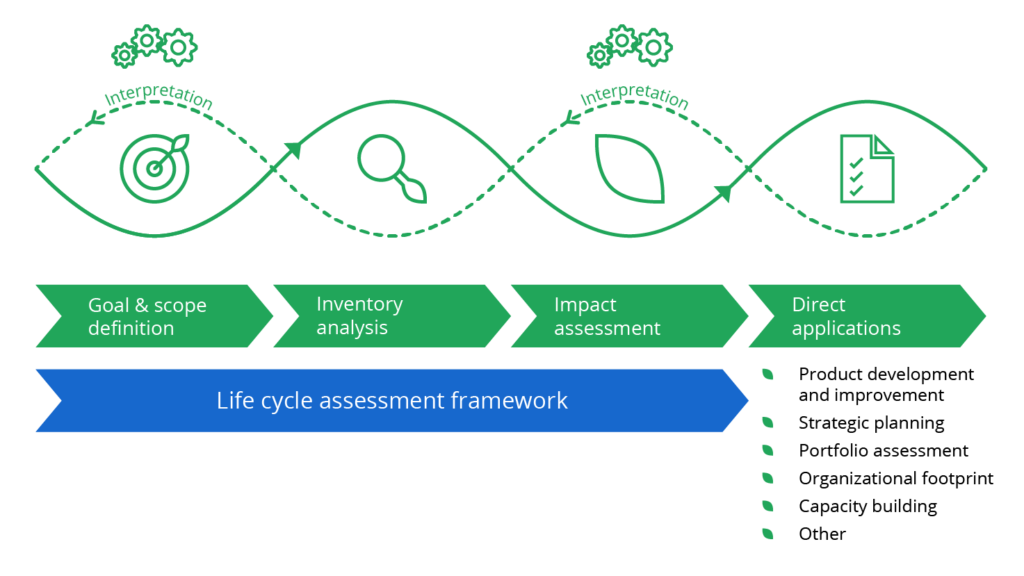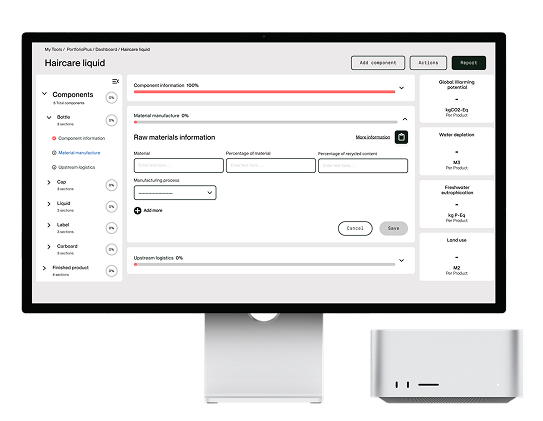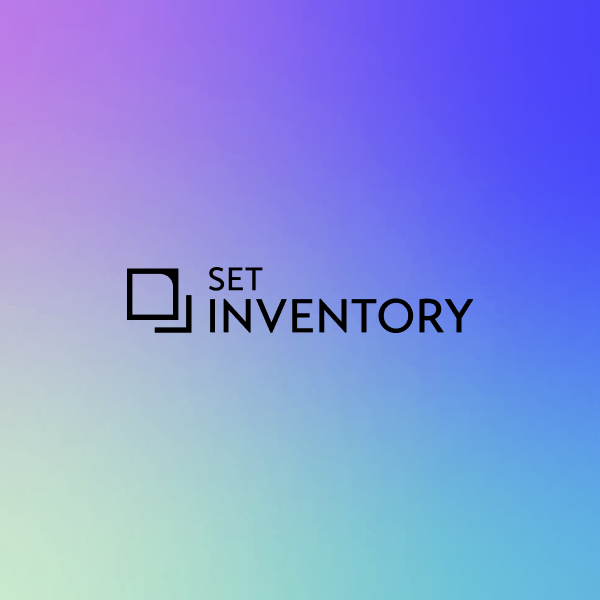Sustainability impact calculator
A sustainability consultancy approached us to design a digital tool to support their clients in calculating environmental impacts. The brief focused on creating an intuitive, web-based calculator to assess carbon footprints across various lifecycle stages of a product or service. Due to confidentiality, the client’s name and proprietary data have been anonymised.

Problem
The client’s carbon footprint tool was built in a complex spreadsheet. It was hard to use, prone to errors, and required expert knowledge. Non-technical users struggled, reporting inefficiencies and inconsistent outputs. The tool couldn’t scale or adapt to broader teams. They needed a simpler, more intuitive solution that maintained the same calculation integrity.
Solutions
We transformed the spreadsheet into a streamlined, web-based tool with guided workflows, real-time feedback, and exportable reports. The new interface simplified complex inputs, reduced user errors, and made sustainability data accessible to non-experts. A modular design system ensured consistency and scalability across future tools.
Deliverables
Web App
UI Branding
Team
Technical Lead Developer
UI/UX Designer
Product Owner (PO)
Scrum Master
Tester
What We did
UI/UX Research
UI/UX Design
Client’s Goals
Our client’s primary goal was to create smart, user-friendly inventory management software. They needed a solution that simplifies inventory tracking, uses AI to predict stock levels, and provides real-time data for better decision-making. Their stated business goals were:
Make LCA calculations accessible to non-technical users
The original spreadsheet was built for experts, most users found it intimidating or confusing.
Reduce time spent on data entry and report generation
Teams were spending up to 45 minutes per assessment and needed a faster, automated flow.
Improve accuracy and transparency in results
Manual inputs often led to inconsistencies, and traceability and clarity were essential.
Build a scalable tool that supports future service offerings
The client wanted a flexible foundation to expand the tool for different sectors and use cases.
Align with environmental reporting standards and client expectations
Outputs needed to meet ISO guidelines and support procurement or compliance documentation.
Cost Efficiency
A solution that can grow with the business, easily adapting to changing inventory needs.


Target Audience
- Design Engineers
- Product Designers
- Sustainability & LCA Professionals
- Environmental Consultants
- Non-Technical Stakeholders
- Operations Managers
Core Features
- Step-by-Step Input Workflow
- Real-Time Impact Calculation
- Editable Assumptions & Data Fields Companies
- Visual Impact Summary
- Exportable Reports
Additional Features

- Dynamic Weighting System
- Tooltips & Contextual Help
- Multi-Scenario Comparison
- Input Validation & Error Flags
- Modular Design System
Achievements
Reduced assessment time by 60%
From 45 minutes to under 20 minutes per standard calculation.
Cut support requests by 75%
Fewer questions and errors thanks to improved UX and guidance.
Created a scalable design foundation
Modular system ready for future LCA tools and service expansions.
Boosted input accuracy by 14%
More consistent data through validation and clearer form logic.
Enabled wider team adoption
Non-experts across departments could now use the tool confidently.
Information Architecture
Organising information flow for intuitive and efficient user journeys.

User Interface (UI) Design


Project Management
We chose the Agile methodology for this inventory software development project because it supports iterative development and adapts easily to changing requirements. This approach allowed us to make frequent updates and continuously improve the project based on feedback.
Sprints
We divided the project into short development cycles (sprints) with frequent releases and updates that kept the project on track
Communication
We used teams and Jira for project management to organize tasks, track progress, and collaborate efficiently with maximum visibility.
Cross-functional Teams
Our developers, designers, and testers worked closely together to ensure seamless integration and high-quality outcomes.
User Feedback
We placed a strong emphasis on user feedback to drive iterative improvements.
Let’s Talk About Your Project
Tell us what you’re building, and we’ll take it from there.
Fill out the form to schedule a free 30-minute discovery call where we understand your idea, offer early advice, and suggest the best next steps.
